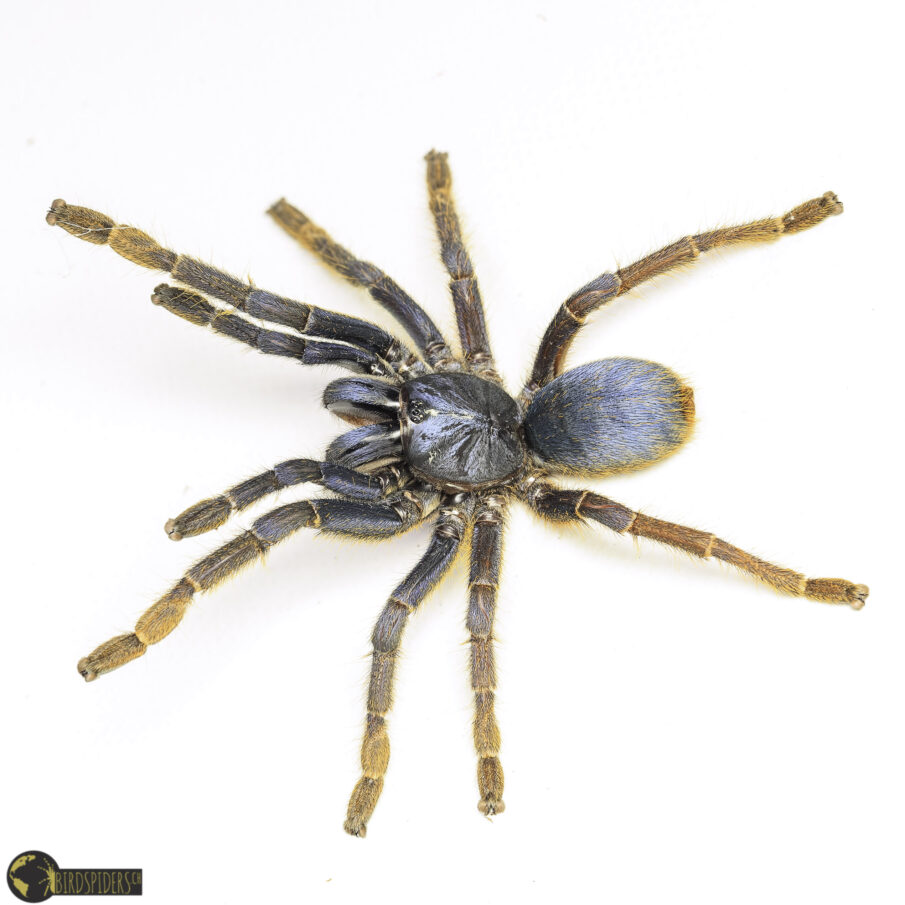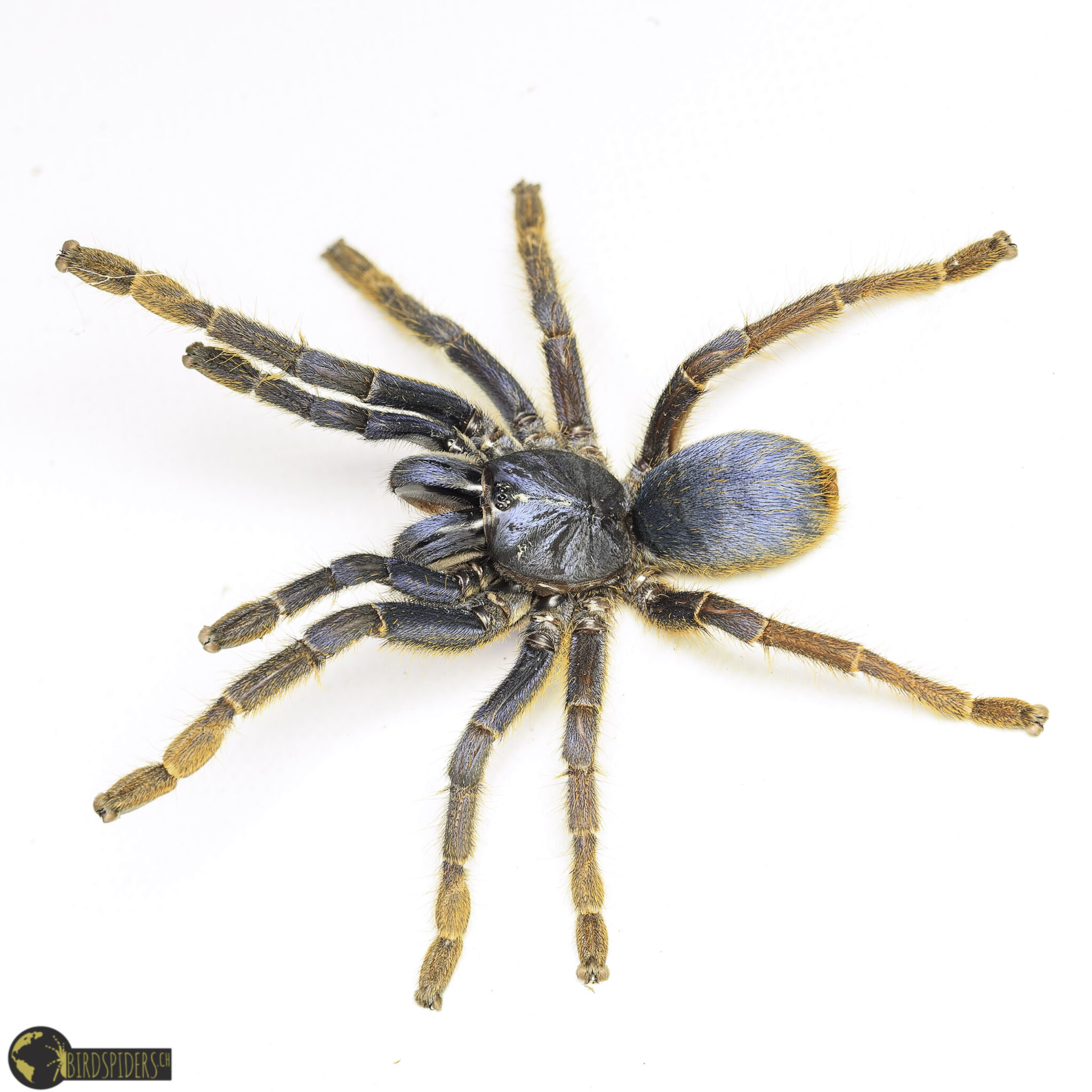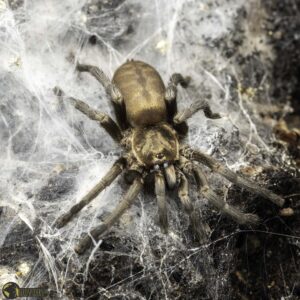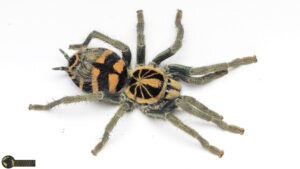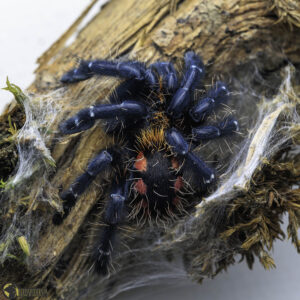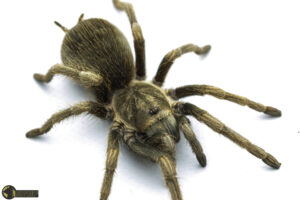Overview
The Vietnam Silver Tarantula is a stunning and unique species of tarantula native to Vietnam, known for its shimmering silver coloration and vibrant yellow hairs on its abdomen and legs. This beautiful arachnid is part of the Ornithoctoninae subfamily, a group of tarantulas found throughout Southeast Asia. These spiders are not only captivating to look at but also play an important role in their ecosystems. Enthusiasts and arachnid lovers often admire the Vietnam Silver Tarantula for its exotic appearance and fascinating behavior.
Natural History of the Vietnam Silver Tarantula
Little is known about the detailed natural history of the Vietnam Silver Tarantula, but it belongs to the Ornithoctoninae subfamily, which includes many burrowing (fossorial) tarantulas native to Southeast Asia. These spiders typically live in underground burrows, where they retreat quickly when disturbed. Some species in this subfamily also exhibit arboreal habits, living in trees. When threatened, they display defensive behaviors such as retreating or striking with their front legs, and if provoked further, they may bite. While their venom is not deadly to humans, it can cause pain, swelling, and joint stiffness.
Taxonomy & Systematics of Ornithoctoninae and the Vietnam Silver Tarantula
The Vietnam Silver Tarantula is part of the Ornithoctoninae subfamily within the family Theraphosidae. This subfamily was first described by Reginald Innes Pocock in 1895 and includes genera such as Haplopelma, Cyriopagopus, Ornithoctonus, and others. The Vietnam Silver Tarantula is often associated with the genus Haplopelma, known for species with striking colors and patterns.
Ornithoctoninae tarantulas are characterized by specific anatomical features, including a retrolateral scopula of filiform setae on the cheliceral base and stridulatory spines on the maxilla. These features help distinguish them from other tarantula subfamilies. The subfamily is distributed widely across Southeast Asia, from Myanmar and Thailand to Indonesia and Malaysia.
The Vietnam Silver Tarantula males typically have a beige base color with a striped abdomen, while juveniles show a brown base color with red legs. The silver sheen and yellow hairs make the adults particularly eye-catching, although photographs often fail to capture the full brilliance of their coloration.
Husbandry of the Vietnam Silver Tarantula
Keeping the Vietnam Silver Tarantula as a pet requires understanding its natural burrowing behavior and environmental needs. These tarantulas thrive in enclosures that mimic their natural habitat, with deep substrate for digging and hiding. Here are some husbandry tips:
- Enclosure: Provide a tall terrarium with at least 15-20 cm (6-8 inches) of substrate such as coconut fiber or peat moss to allow burrowing.
- Temperature: Maintain a temperature range of 24-28°C (75-82°F) to simulate their tropical environment.
- Humidity: Keep humidity levels around 75-85% by misting the enclosure regularly and providing a shallow water dish.
- Feeding: Feed a diet of crickets, roaches, and other appropriately sized insects once or twice a week.
- Handling: These tarantulas are defensive and fast; handling is not recommended to avoid stress and potential bites.
Due to their defensive nature and potent venom, the Vietnam Silver Tarantula is best suited for experienced tarantula keepers. Proper care and respect for their natural behaviors ensure a healthy and thriving pet.
References
- von Wirth, V. & M. Huber (2003). Earth Tigers – die asiatischen Vogelspinnen der Unterfamilie Ornithoctoninae. DRACO 4(16): 26-36.
- Smith, A.M. & M.A. Jacobi (2015). Revision of the genus Phormingochilus with the description of three new species from Sulawesi and Sarawak. British Tarantula Society Journal 30(3): 25-48.
- Wikimedia Foundation. Ornithoctoninae. Wikipedia. Retrieved from https://en.wikipedia.org/wiki/Ornithoctoninae
- Deutsche Arachnologische Gesellschaft e. V. (DEArGe). Retrieved from http://www.dearge.de/english.php
